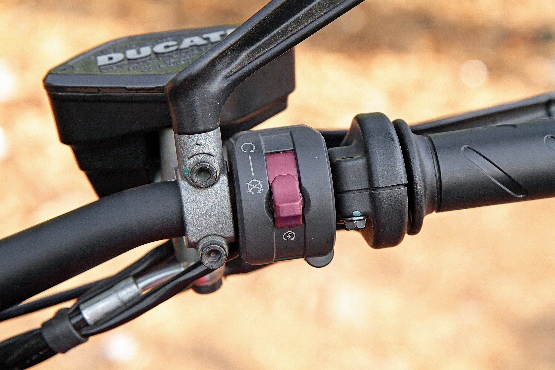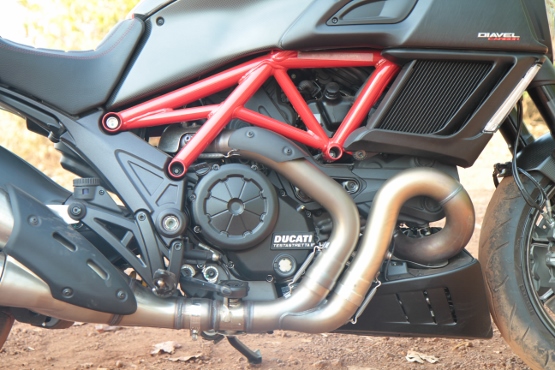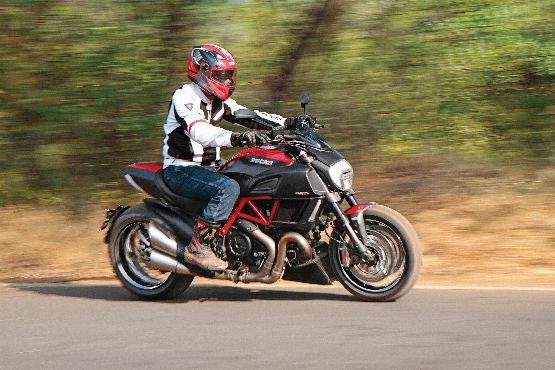 Having familiarised myself with all the controls, I flicked the engine kill switch (which cleverly covers the starter button when switched off) on and thumbed the starter. The Diavel starts with a nice loud bark before settling into a throaty rumble from its 1,198.4-cc liquid-cooled Testastretta 11° L-twin. In case you’re wondering, this is the same engine that powers the fearsome 1199. However, before you get the horses galloping, the unit sitting in the Diavel’s trellis frame is in a different state of tune. While the 1199 puts out 195 galloping thundering Pferde, the Diavel has a more modest 162 PS on twist. Torque, too, is reduced to 130.5 Nm as opposed to the 1199’s 133 Nm. In the Diavel the peak power comes in at 9,250 RPM while the maximum torque is available at 8,000 revs. Both of these are transmitted to the rear wheel via a slick six-speed ‘box. There’s a slipper clutch to boot.
Having familiarised myself with all the controls, I flicked the engine kill switch (which cleverly covers the starter button when switched off) on and thumbed the starter. The Diavel starts with a nice loud bark before settling into a throaty rumble from its 1,198.4-cc liquid-cooled Testastretta 11° L-twin. In case you’re wondering, this is the same engine that powers the fearsome 1199. However, before you get the horses galloping, the unit sitting in the Diavel’s trellis frame is in a different state of tune. While the 1199 puts out 195 galloping thundering Pferde, the Diavel has a more modest 162 PS on twist. Torque, too, is reduced to 130.5 Nm as opposed to the 1199’s 133 Nm. In the Diavel the peak power comes in at 9,250 RPM while the maximum torque is available at 8,000 revs. Both of these are transmitted to the rear wheel via a slick six-speed ‘box. There’s a slipper clutch to boot.

Still trying to come to grips with my shakes, I gently let the clutch out and opened the throttle a wee bit. Voila! The bike rolls off gently and smoothly. At ease now, I get going and it becomes immediately apparent that the Diavel is a rider-friendly motorcycle. It feels light on its feet and the power is delivered in a smooth arc so that it doesn’t leave even novices like yours truly fazed and gasping for breath. Things only start to become frenetic as you watch the revs climb past 5,000 RPM. Of course, on the narrow and crowded roads of Goa one can’t really experience the Diavel’s monstrous side, but the bike does give you enough hints about what it can do. That is when you discover the third and final layer to this motorcycle. Beneath the veneer of rider-friendly softness lies a core of carbon with fangs that could bite your head off. Should you choose to get ham-fisted and wring the throttle harder than usual, that is. Else, it is happy to comply with your inputs and play an able companion who will gently but surely help you improve as you discover your limits on this bike. Trust me, you will exceed your own riding abilities long before the bike reaches its limits. Unless you’re a rider of exceptional skill, of course.



Leave a Reply